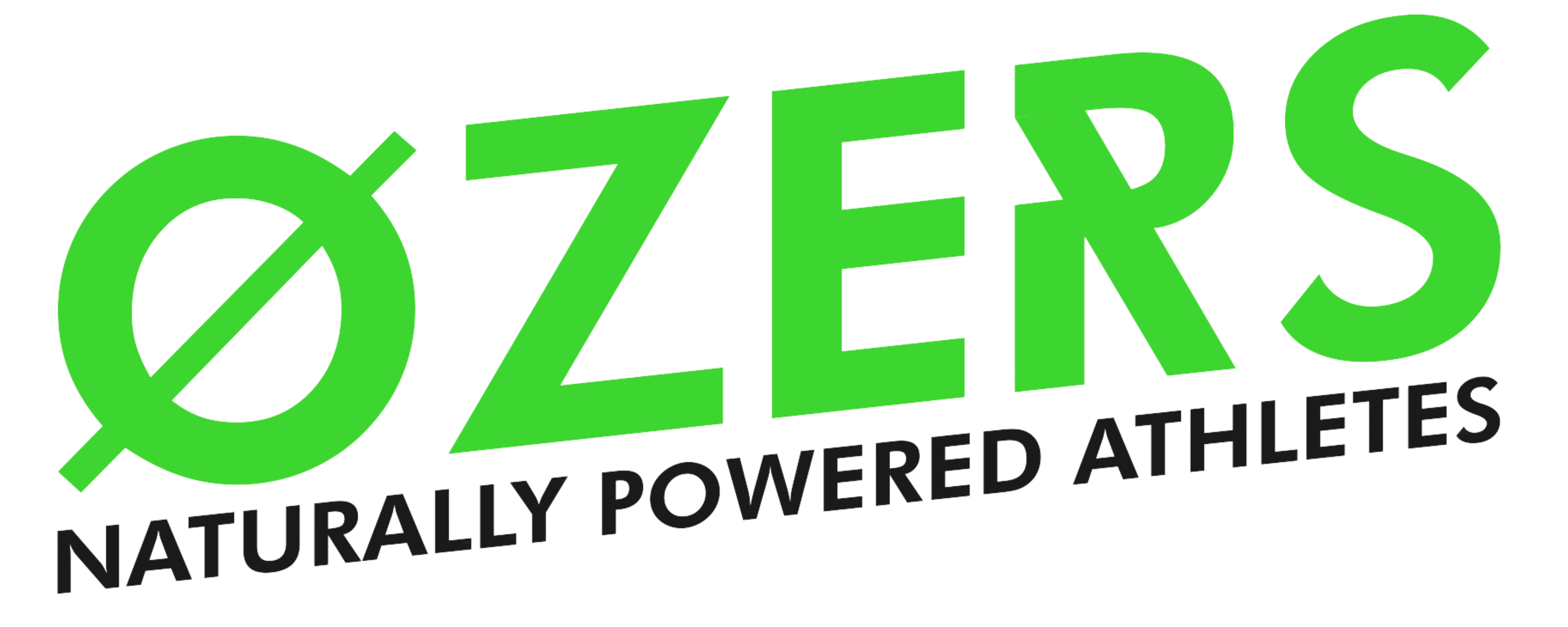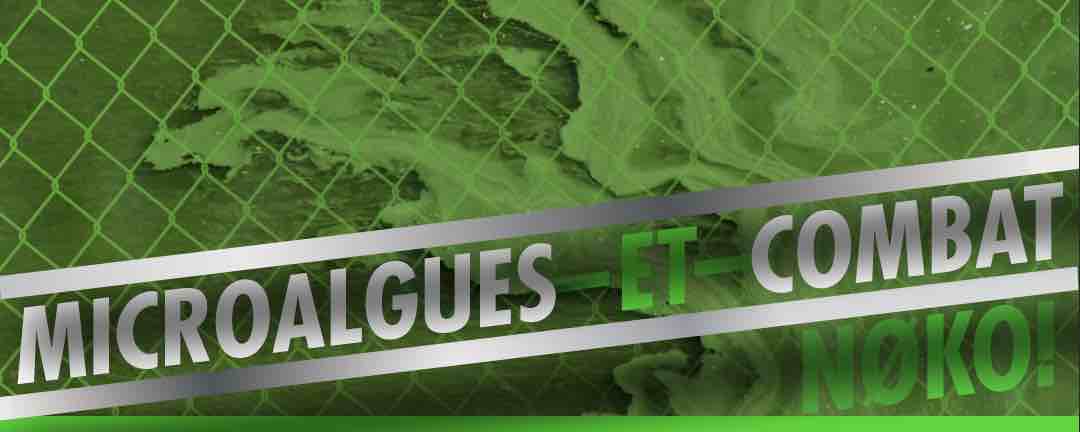The benefits of spirulina and chlorella
Microalgae are microscopic algae found in freshwater or seawater. Their biodiversity is very important, and depending on the species of microalgae the size and shape change. They are microorganisms capable of oxygenic photosynthesis, and, due to their presence in an aqueous medium, they are capable of fixing inorganic carbon. In addition to their important ecological role, they have been consumed for thousands of years all over the world, particularly in the form of food supplements. But what are their benefits??
Why microalgae?
Composition of these superfoods
Microalgae are known to be high in protein, due to well-balanced amino acid compositions, in line with WHO recommendations for human essential amino acid requirements (5). It is not necessary to recall howoptimize your protein intake is essential for the muscles!
Apart from proteins, microalgae are a source of several compounds with health benefits such as carbohydrates, polyunsaturated fatty acids, essential minerals and vitamins, which can increase the nutritional value of food products when incorporated. Polysaccharides and oligosaccharides are promising compounds, garnering attention as potential prebiotic candidates. Among the fatty acids, eicosapentaenoic acid (EPA) and docosahexaenoic acid (DHA) are associated with the prevention or even improvement of cardiovascular or renal diseases (6). These fatty acids can only be produced by plants, so consumers must incorporate them into their diet. The high concentration of vitamins (A, B1, B2, B6, B12, C, E, biotin, folic acid, pantothenic acid, etc.) found in microalgae are also essential for the proper development and functioning of the human organism (7).

Two star microalgae
The use of "wild" harvested macroalgae for food purposes has been well established for hundreds of years in Asian countries. Nevertheless, the commercial cultivation of microalgae began only 60 years ago. Thus, chlorella (Chlorella vulgaris) was produced in Japan and Taiwan in the 1960s, and the production of spirulina (Arthrospira platensis) was developed in the United States, Israel, Australia, China and Thailand. in the 1980s. Among the diversity of existing microalgae, these two microalgae are mainly cultivated for their benefits detailed below (9). Thus these microalgae are part of the composition of theNØKO product! Post-Training to allow optimal performance and recovery!
Spirulina
Spirulina is the ideal microalgae to improve your immune system and regain better health. It is naturally very rich in proteins which represent 60-70% of its composition (10), with 18 amino acids, 8 of which are essential (11). This protein level is considered higher than that of all other foods, and its cell walls allow easy assimilation of proteins by the body. A correct supply of amino acids is essential to optimally stimulate themuscle protein synthesis, as well as ensuring aprotection of his joints during sports sessions.
Spirulina is a source of vitamins...
It is also a great source of vitamins (A, B1, B2, B3, B5, B6, B7, B8, B9, B12, D, E, K), and omega-6. Its richness in B vitamins is four times higher than those produced by our liver. However, B vitamins are very important because they are involved in the production of energy. This microalgae is therefore optimal against deficiencies and fatigue. It is the best food source of antioxidants with ß-carotene, zeaxanthin, phycocyanin or even superoxide dismutase (12). Phycocyanin is present only in blue-green microalgae, such as spirulina, and according to numerous studies it has immunostimulatory and anti-viral properties (10). Research has concluded that this antioxidant strengthens biological defenses against infectious diseases, by participating in the immune system, but also gives spirulina the ability to be a preventive agent against cancer (10).
... highly antioxidant and beneficial
The antioxidant effect is also important for fighting chronic inflammation, which can cause pain, swelling, and redness due to inflammation that damages healthy tissue, and thus spirulina is said to help with liver detoxification as well (13 ). A 2001 study further describes the beneficial effect of spirulina supplementation in controlling blood glucose levels, which improves the lipid profile of subjects with type 2 diabetes (14). This microalgae contains between 1 to 1.5 g of g-linolenic acid (GLA), an essential fatty acid not synthesized by humans, which helps prevent the formation of bad cholesterol (12).
Spirulina has a very pronounced iron taste due to its mineral richness, which also includes magnesium, phosphorus, potassium, calcium, selenium, sodium, copper, zinc and manganese. Its iron content is such that spirulina helps to limit anemia. Its richness in minerals gives it cardiovascular benefits, for example by preventing atherosclerosis, or even by controlling high blood pressure (10).
It is therefore a superfood due to its extremely nutritious composition and low calorie content, only 333 kcal per 100g (10)!
For comparison, spirulina is (10):
- 670% more protein than tofu
- 3100% more ß-carotene than carrots
- 5100% more iron than spinach
- 180% more calcium than whole milk

Chlorella
Along with spirulina, chlorella is one of the most used microalgae for human nutrition because it represents a source of quality nutrients. It is particularly known for being rich in protein with a content of up to 58% of dry mass (15). These are quality proteins because they have an amino acid profile similar to that of egg or soy protein (8). This microalgae is also rich in nutrients. For example, it contains many vitamins (vitamins B6, B9, B12, C, E, K1) (16), minerals (calcium, potassium, magnesium, iron) (16) and polyunsaturated fatty acids including omega 3 (16 )(17). No need to introduce you to these nutrients again. They are known to be involved in many mechanisms of the human body and to be essential for the maintenance of good health. In addition, its high fiber content, up to 10%, promotes transit (16) and takes care of the intestinal microbiota.
Chlorella compounds help against diseases
But that's not all ! Chlorella also has many virtues to fight against diseases. Thanks to its various active molecules, chlorella contributes to the good health of the body and to the improvement of certain diseases such as cancer, excess cholesterol or more generally bacterial infections (18). Indeed, this microalga contains ß-carotene which gives it antioxidant and anticancer properties (19) and reduces the amount of lipids present in the serum (20). In addition, certain ß-carotenes such as lutein and zeaxantins present in chlorella contribute to the proper functioning of the eyes (19). The phenolic compounds of the seaweed also contribute to the antioxidant effect (19). This algae also contains ß-1,3-glucan, a substance that is considered to have the ability to stimulate the immune system but also to eliminate free radicals and reduce the amount of lipids in the blood (18). Finally, chlorella methanol extracts exhibit anti-cancer effects as they are toxic to tumor cells (but not healthy cells), (21) and anti-bacterial on certain strains of bacteria (22).
In summary, chlorella is a very good food because of its richness in nutrients which are good for health and for the improvement of certain diseases. To top it off, it is low in calories: only 409 kcal per 100g (23)!
For comparison, chlorella is:
- 243% more protein than tofu
- 550% more ß-carotene than carrots
- 1643% more iron than spinach
- 3173% more calcium than whole milk
Two complementary microalgae
In conclusion, spirulina and chlorella have impressive nutrient profiles and health benefits. Their main nutritional differences are in their calorie, vitamin and mineral content. Thus chlorella contains more calories, omega 3 fatty acids, provitamin A, riboflavin, iron and zinc. Spirulina on the other hand is higher in omega 6 fatty acids, thiamin, copper and some strains of spirulina can be 10% higher in protein (24). By combining the two,NOKO! Post-Training offers you an optimized and maximized intake of these superfoods that are microalgae!

Fight against various diseases
In the 1950s the search for biologically active substances from algae began in earnest (1). Since then, certain microalgae extracts and their chemical constituents such as carotenoids, phenolic acids, flavonoids, sterols and polyunsaturated fatty acids have been shown to show promising antioxidant and neuro-protective activities. Today these microalgae are therefore studied to treat inflammatory diseases, cancer, diabetes or even neurodegenerative diseases, such as Alzheimer's (2)(3). In addition, it has been described that chlorella extracts, for example, have been used as treatments to relieve hypertension and are studied for their ability to modulate the immune response, which is an interesting property for antiviral and antitumor therapies (4) .
Sustainable food supply alternative
Besides their health and dietary benefits described below, microalgae could be a sustainable solution to a growing population with growing needs. Indeed the amount of food currently produced must double to meet the needs of the population of 2050, estimated at around 9.8 billion people (6). The advantages of biomass production from microalgae over plant biomass production include higher yield, use of non-arable land, nutrient recovery from wastewater, efficient carbon capture and adaptation of these algae to a wide range of environmental conditions (8). New technologies and new food products based on microalgae could therefore help reduce the environmental impact (decline in biodiversity, deforestation, soil degradation) caused by current dietary behavior (6).
Article written by Manon Moussay, Alexia Oechsel and Laurianne Trabut Collaboration NØKO! x Sorbonne
Sources
(1) Protein intake: consumption, quality, needs and recommendations:https://www.anses.fr/fr/system/files/NUT-Ra-Proteines.pdfbr />
(2) Trends in Microalgae Incorporation Into Innovative Food Products With Potential Health Benefits:https://www.frontiersin.org/articles/10.3389/fnut.2018.00058/fullbr />
(3) Microalgae: A Promising Source of Valuable Bioproducts:https://www-ncbi-nlm-nih-gov.accesdistant.sorbonne-universite.fr/pmc/articles/PMC7465300/br />
(4) Commercial application of microalgae other than as biofuels: a brief review:https://sci-hub.do/https://doi.org/10.1007/s11157-010-9214-7
(5) Therapeutic potentials of microalgae in the treatment of Alzheimer's disease:https://www-ncbi-nlm-nih-gov.accesdistant.sorbonne-universite.fr/pmc/articles/PMC6155420/
(6) Antimicrobial potential of macro and microalgae against pathogenic and spoilage microorganisms in food:https://www-ncbi-nlm-nih-gov.accesdistant.sorbonne-universite.fr/pmc/articles/PMC7131516/br />
(4) Chlorella sorokiniana-Induced Activation and Maturation of Human Monocyte-Derived Dendritic Cells through NF-κB and PI3K/MAPK Pathways:https://www-ncbi-nlm-nih-gov.accesdistant.sorbonne-universite.fr/pmc/articles/PMC3523612/br />
(8) Biomass from microalgae: the potential of domestication towards sustainable biofactories:https://www-ncbi-nlm-nih-gov.accesdistant.sorbonne-universite.fr/pmc/articles/PMC6230293/br />
(9) Microalgae for High-Value Products Towards Human Health and Nutrition:https://www-ncbi-nlm-nih-gov.accesdistant.sorbonne-universite.fr/pmc/articles/PMC6562505/br />
(10) Potential health benefits of spirulina microalgae:https://link.springer.com/article/10.1007%2FBF03223332br />
(11) Spirulina: its nutritional compositionhttps://www.spirulinefrance.fr/la-compositon-record-de-la-spirulinebr />
(12) Organic spirulina: its benefits and effectshttps://www.natesis.com/microalgae/spirulinabr />
(13) 7 science-backed health benefits of spirulina the antioxidant-packed microalgae you should try adding to your smoothies: https://www.insider.com/benefits-of-spirulinabr />
(14) Role of Spirulina in the Control of Glycemia and Lipidemia in Type 2 Diabetes Mellitus:https://pubmed-ncbi-nlm-nih-gov.accesdistant.sorbonne-universite.fr/12639401/br />
(15) Microalgae as a source of protein:https://pubmed.ncbi.nlm.nih.gov/17196357/br />
(16) Chlorella: uses, properties, composition:https://www.compagnie-des-sens.fr/chlorella/br />
(17) Characteristics and nutritional and cardiovascular-health properties of seaweeds:https://pubmed.ncbi.nlm.nih.gov/19459725/br />
(18) Commercial application of microalgae other than as biofuels: a brief review:https://link.springer.com/article/10.1007/s11157-010-9214-7br />
(19) Antioxidant potential of microalgae in relation to their phenolic and carotenoid content:https://link.springer.com/article/10.1007/s10811-012-9804-6br />
(20) Antitumor activity of Chlorella sorokiniana and Scenedesmus sp. microalgae native of Nuevo León State, Mexico:https://www.ncbi.nlm.nih.gov/pmc/articles/PMC5808310/br />
(21) Impact of daily Chlorella consumption on serum lipid and carotenoid profiles in mildly hypercholesterolemic adults: a double-blinded, randomized, placebo-controlled study:https://www.ncbi.nlm.nih.gov/pmc/articles/PMC4066283/br />
(22) Antibacterial activity of methanolic extracts from Dunaliella salina and Chlorella vulgaris:https://faseb.onlinelibrary.wiley.com/doi/abs/10.1096/fasebj.27.1_supplement.1167.5br />
(23) Chlorella Nutrition Sheet:https://www.consoglobe.com/la-fiche-nutritionnelle-de-la-chlorelle-cgbr />
(24) Chlorella and Spirulina: What's the Difference https://infosante24.com/chlorella-et-la-spiruline-quelle-est-la-difference/br />




